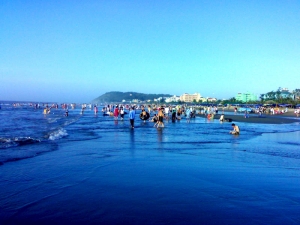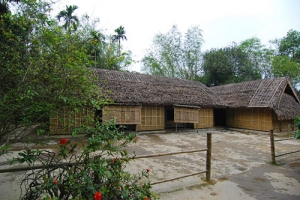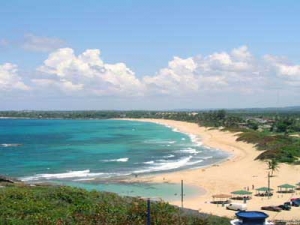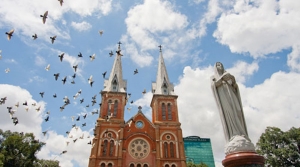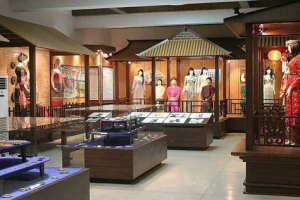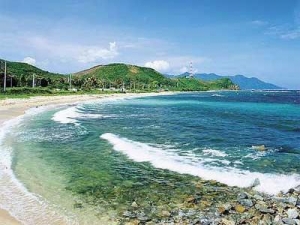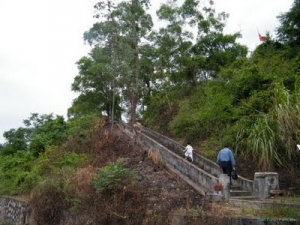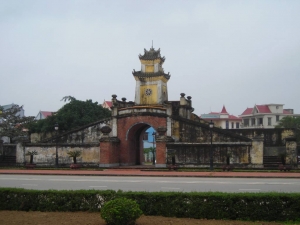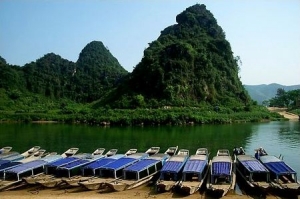
Asia Pacific Travel Team
Sam Son Beach- One amongst the Most Beautiful in Northern Vietnam
Driving 16km from the center of Thanh Hoa and 170 km from Hanoi, tourists in Vietnam travel will reach Sam Son Beach in Thanh Hoa province. This place has been a famous spot for Vietnam tourism since the beginning of the previous century, when the French begun building facilities there to serve themselves and the courts of the Nguyen regime. In addition to the gifts that the nature presents, Sam Son also has many attractions for the travelers to explore.
This is a long and beautiful beach reaching more than 16km in length. Visitors will have some unforgettable moments when they wallow in the cool blue sea, listen to songs of the wave and the wind, and take a nap on the sunlight sandbanks or build sand castles. Also, this is a good place to try various local seafood varieties such as shrimps, crabs, fishes and also to bring back home some nice souvenirs. The very flat and gentle sandbank, combined with the clean and blue water makes the scenery of Sam Son beach magnificent and attractive.

Sam Son attracts a larger number of tourists in Vietnam travel in summer vacation annually
Besides the beaches, Sam Son also has another fascinating destination with many natural attractions and historical relics: the Truong Le Mountain range. The part that is contiguous to the sea is called Co Giai Islet. On top of this islet, there is a small pagoda named “Doc Cuoc”, which means “One Leg”. The pagoda is the place for the local people to recall the epic legend of a giant that manages to slay a sea monster and to guard the sea in the past. Also, there is a special rock name “Trong Mai”, formed with two huge boulders on a flat rock. There is a story that these rocks represent a pair of husband and wife, who love each other passionately even when both have been transformed into birds.

Beautiful Landscape of Truong Le Mountain Range
If you are a lover of beach travel and making tours to Vietnam, Sam Son beach that is in top of beautiful beaches in the North Vietnam should be listed on your trip.
Visiting Sen Village- President Ho Chi Minh’s Homeland
Just 45km from the central city of Vinh, Sen village is located in Kim Lien commune, Nam Dan district, Nghe An province. The village is the birthplace of the late president Ho Chi Minh.
Like other normal rural villages in Vietnam, Sen village, also called Kim Lien village, is quite tranquil, peaceful and poetic with green bamboo, public well, temple' ground where festivals or crucial occasions of the village taking place.
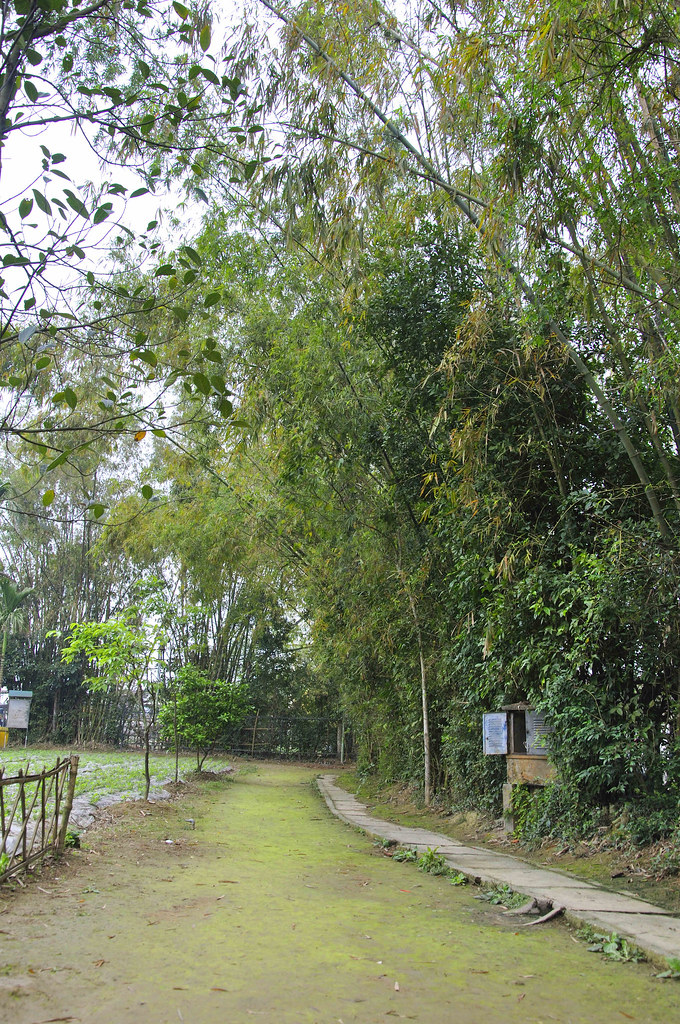
Sen Village- Nghe An
Travelers in Vietnam tourism come to this village mostly to visit the house where Uncle Ho has grown up before he traveled abroad the find the way to rescue Vietnam from colonization. The house was built by donation and effort of local residents in 1901 to celebrate high result in national examination of Uncle Ho's father Nguyen Sinh Sac. It has been preserved with almost original structure and design, with all simple objects of a Confucianism family like traditional brushes or ink boxes, and popular items that can be seen in any house in rural area such as bamboo mat, trays or rice mortar. Around the house is a lush garden with numerous green plants, including many souvenir trees grown by guests who have visited this place.
Sen village was recognised as one of the national cultural historical relics by the Ministry of Culture and Information (now the Ministry of Culture, Sports and Tourism) in 1979.

Kim Lien relic complex in Sen village


Incense offering at the Ho Chi Minh Memorial House

The banyan tree and the playground where uncle Ho met villagers during his visits to
his native place in 1957 and 1961

Coc well

The hibiscus hedge

A garden in front of Nguyen Sinh Sac’s thatched cottage



The board of honour granted by King Thanh Thai to Nguyen Sinh Sac in 1901
when he graduated as the second best examinee
Cua Lo Beach-Nghe An Lures Tourists in Vietnam Travel
Situated in Nghe An Province, on the shore of the East Sea with the Cua Lo estuary in the north and the Cua Hoi estuary in the south, Cua Lo Beach is one of the nicest beaches in North Vietnam with its white sand and clear blue water.
Recognised as one of Viet Nam's most beautiful beaches by the World Tourism Organisation, Cua Lo is defined by its natural assets: Cua (estuary), because the Lam River empties into the sea to create a shallow and clear shore, and Lo (jutting), after Lan Chau Island, a long strip that spears the north-east corner of the bay. In the summer, winds from the west mix with sea currents to wield two seasons in a day. The beach becomes packed with tourists during the summer high season.
The picturesque beauty
Not far from Vinh just only 18km, a busy border crossing with Laos, Cua Lo, an up-and-coming coastal resort in central Nghe An Province, is luring domestic travellers from both the north and south. Stretching over 10km, Cua Lo Beach is well known for its smooth sands and sparkling, salty seawater. More and more tourists are coming to the beautiful beach with rows of casuarina and coconut trees. The seawater at Cua Lo is clean and highly salted. Cua Lo is one of the best beaches in Vietnam. Not far from the beach are 3 islands: Hon Ngu, Hon Chu, and Hon Mat with natural and primitive landscape which is very attractive to tourists in Vietnam travel.
Cua Lo is also famous for its beautiful islands such as Lan Chau, north of Cua Lo, and Song Ngu to the southeast. These two islands protect Cua Lo Beach from heavy storms and strong winds coming in from the East Sea. 20km from the beach, the Quynh Nhai Island group is made up of many smaller, picturesque islands. Beachside boat operators service trips to both islands, both of which take about 10 minutes one-way.
Nowadays in Cua Lo, a number of rest houses and hotels, and the modern services system is constructed to meet the need of the travelers. The town's main drag – Binh Minh Street – runs along the beach for 10km. With hotels on one side and a natural casuarina forest on the other, the road remains shady all day. Both sides are under the careful watch of local authorities. The forest serves as a natural barrier against beach erosion, and provides a cool cover for sun-soaked tourists. In an effort to preserve Cua Lo's natural beauty, hotels must be low and stilt houses peak out from behind the tree trunks.
Reaching Cua Lo, you can go by ship, train or car. You can take a yacht to go on the Lam River to reach Giang Dinh and visit the homeland of great poet Nguyen Du. In Cua Lo, you can also contemplate the scenery of Hong Linh mountain, visit the tomb of Mai Hac De and Kim Lien village - the motherland of President Ho Chi Minh. Once in Cua Lo, you can visit the islands by boat, climb the mountains, dive, and visit historical and literary sites such as the temple in honor of Nguyen Xi in Nghi Hop Commune, the Trung Kien Pagoda in Nghi Thiet Commune, and the Hoang Van family altar in Cua Lo. From Cua Lo, you can go about 2km west to reach historical and cultural relics that are of special architectural styles. Those include the temple worshipping Nguyen Xi - a talented commander of King Le Loi, the temple worshipping mandarin Nguyen Su Hoi, the Dao Ngu pagoda, and many beautiful places like Quan Tung mountain.

Eye the future path
Founded in 1994, the town of Cua Lo has developed rapidly to house visitors. The town now has modern infrastructure and transportation systems, and many entertainment and tourist resorts and hotels. Cua Lo always has a festival on May 1 to welcome the first tourists to the beach for the summer holiday. At the festival, tourists can take part in traditional games and tournaments.
"Cua Lo was Nghe An Province's fastest growing locality last year. Local authorities are drafting plans to expand tourism facilities and services to lure more tourists," said Mr. Ho Duc Phoc - current chairman of Cua Lo People's Committee.
Also, four large-scale tourism projects are in the works: a tourism, commerce, and sport complex, slated to open next year; an ethnic cultural village and a children's park, which are both still in the planning stages; and a night market in Cua Lo’s Nghi Huong Village, will be set up soon.
Cua Lo marks its 10th birthday in August 2008, Nghe An province opened the town’s biggest ever tourism event with a view to turning Cua Lo into a typical sea travel centre of the central region. To diversify tourism products, Cua Lo town is trying its best to become a centre linking tours and cultural-historical sites of Nghe An Province with other neighbouring provinces such as Ha Tinh, Thanh Hoa and Quang Binh. The town has set up a centre introducing and selling tourism products and a centre giving consultancy to tourists so that tourists can visit places of interest and landscapes in Nghe An in the quickest way.
In terms of security and safety for tourists, the Cua Lo town has built a warning system for tourists and a rescue centre, including excellent swimmers. High-speed boats have also been bought to serve tourists.
With such efforts, the Cua Lo town is able to meet the needs of a large number of tourists during the upcoming summers and bring comfortable and relaxed days to tourists in Vietnam travel.
It is worthy of saying that Cua Lo has gone from a sleepy beach town to a summer hot spot, pairing seaside activities with eco-adventures. Surely, Cua Lo-Nghe An is an ideal destination of tourists coming to Vietnam in summer.
Notre Dame Cathedral (Notre-Dame Basilica) in Ho Chi Minh City
Constructed by the French in the 1800s, Notre Dame Cathedral is a famous ancient cathedral in Vietnam tourism of South. Twin towers reaching to 190 feet capture the interest of people strolling. The entire cathedral was constructed with materials brought from France; the red bricks came from Marseille while the colored glass windows were made in France’s Chartres Province. Most of the original tiles still bear markings from France, although many new tiles have replaced ones damaged during the war. In front of the Cathedral is a Virgin Mary statue.
This magnificent building attracts not only Catholics but also most tourists for its neo-Romanesque style architecture and a sacred atmosphere. Peaceful green spaces lined with shade trees and park benches lead up to Notre Dame Cathedral.

With a central location in Ho Chi Minh City, it is easy to visit the Notre Dame Cathedral when walking between popular destinations such as the War Remnants Museum and the Reunification Palace. The cathedral occupies a block just northeast of the Reunification Palace at the intersection of Dong Khoi Street and Pasteur Street - near the Central Post Office.

Sunday Mass hours:
Morning: 05:30, 06:30, 07:30, 09:30
Afternoon: 04:00, 05:15, 06:30
Visiting hours: from 08:00 AM to 10:30 AM & from 03:00 PM to 04:00 PM

Vietnam Golf and Country Club Attracts Tourists Nationwide and Worldwide
Occupying 150 ha, the West and East courses, opened in late 1994 and 1997 respectively, impress players with their designs. The West Course follows the Asian tradition of narrow, tree-lined fairways and fast, smooth greens with 12 artificial lakes in a poetic landscape. The East Course features Western-style architecture and offers long, wide fairways with well placed bunkers and water hazards plus challenging, undulating greens.
Many tournaments have been fought out on these lawns. Right after the West Course’s opening, the Asia Professional Golf Tournament took place there in 1995 and 1996.
With the competitions, the club has also received top golfers of many Southeast Asian countries. Overall, the club has welcomed 700,000 players so far. Of them, 500,000 are members.
Both East and West courses have become popular among foreign tourists in Vietnam travel through arranged golf tours. Most of the players have given their thumbs-up to the club’s services and quality. Besides the two courses, the club has 59 luxurious, spacious and well-furnished villas of Western design.
The fresh air, tranquility, safety and world-class facilities surrounded by green grass are certain to enthrall guests. Close to the golf courses, most villas look out to the 12 ha natural Dai Vien Lake. Many senior officers of companies in industrial parks and export processing zones in Ho Chi Minh City and the neighboring provinces of Dong Nai and Binh Duong have moved into the Lakeview Villas. The villas are also home to specialists and their families from the United States, the United Kingdom, Germany, Belgium, France, South Korea, Taiwan, Hong Kong, etc.
All tenants are allowed to use the open-air Sports Club and get discounts when playing golf. In addition, the Vietnam Golf and Country Club has a restaurant, a driving range, a tennis court, a badminton court, boats and a playground area for children.
Nam Bo Women's Museum where Preserves and Highlights Women’s Fine Traditions
Nam Bo Women's Museum is located on No.202 Vo Thi Sau Street, District 3, Ho Chi Minh City. It is opened in 1985 as a center for educational and cultural activities, traditional meetings, scientific seminars and cultural exchanges for women.
This building once belonged to Nguyen Ngoc Loan, Director of the General Police Department under the former Saigon government. In 1984, it was turned into the Traditional House of Nam Bo Women. Later, another four-storey building was added and the whole complex became the Nam Bo Women's Museum.
The 2,000m2 display areas of the museum is divided into 10 rooms, each showing the tradition of national construction and defense of Nam Bo Women. A 500-seat meeting hall, a movie theatre, a library and a boutique are also included in the complex. The museum aims to preserve and highlight the fine traditions of women.
Visiting the museum, visitors in Vietnam travel will see the fine traditions of Nam Bo women which are preserved and highlighted here.
A Fascinating Seaside Landscape on Central Vietnam, Nhat Le Beach
Still, on your supposed North-East journey, it’s quite easy to realize Dong Hoi, a nice small town of Quang Binh province alongside Nhat Le River. You may see a nearby beautiful beach, named Nhat Le, and a green Bao Ninh peninsula full of coconut tree shadows & fishing boats on the other riverside, making a fresh water-color painting. After only ten-minute drive across the river bridge, you now have a chance to relax yourself in a magnificent fairy landscape of beach, long-lasting sand banks, blue sky, blue sea, and green coconut tree rows!
Climate
Dong Hoi in general and Nhat Le in particular have a monsoon tropical climate with two seasons, dry and rainy ones. Average temperature is 24.6oC, with the lowest of 7.7oC in January, and the highest of 42.2oC in June. The average humidity is 83%/year. In the scorching hot days of dry season, Nhat Le beach is considered Vietnam’s Sahara Desert, somehow stimulating travelers.
Let’s take a round trip
 Taking a tour to Nhat Le beach, you, tourists in Vietnam travel, may enjoy a series of interesting relaxation activities. On arrival, you should take a walk alongside the romantic mirror-like Nhat Le River, and let your soul leisurely “drift” with the rippling river waves, so as to feel a poetic sparkling Nhat Le. The early morning is ideal time to enjoy yourself on the long-lasting sand bank, which is compared to “Sahara Desert of Vietnam” to know how hot and sunny it is in Quang Binh, before dipping into the very cool, fresh and blue sea water.
Taking a tour to Nhat Le beach, you, tourists in Vietnam travel, may enjoy a series of interesting relaxation activities. On arrival, you should take a walk alongside the romantic mirror-like Nhat Le River, and let your soul leisurely “drift” with the rippling river waves, so as to feel a poetic sparkling Nhat Le. The early morning is ideal time to enjoy yourself on the long-lasting sand bank, which is compared to “Sahara Desert of Vietnam” to know how hot and sunny it is in Quang Binh, before dipping into the very cool, fresh and blue sea water.
Not only could you go swimming, but take part in a number of other exciting entertainment types as well. For example, go sand-skating with your friends on nearby sand caverns, boat sailing on the vast clear sea, parachute jumping on the sea, enjoying hundreds of special seafood only found in Vietnam’s central sea zone, and so forth. Believe me, you will soon miss the pure and eventful atmosphere in this beautiful seaside!
Besides, Nhat Le is also famous for a great deal of beautiful cultural activities and historical sight-seeings. After a series of exciting entertainment kinds, tourists in Vietnam tourism may independently travel around Bao Ninh seaside village, joining an interesting fishing festival, listening to the enchanting folk songs, contemplating a traditional gentle dance -“bông chèo cạn ” performed by graceful local girls, or visiting fish, tortoise, and trionychid turtle raising farms west of the town, etc. Nhat Le’s cultural tranquintences may lure you from daily busy thoughts and tensions.

For history explorers, a few minutes should be spent on visiting and praying for Mother Suot Statue right in Bao Ninh sand village), a heroic Mother during Vietnam war. A very moved historical site of enormous significance that worths your visit is the place where Uncle Ho Chi Minh and other Vietnam’s high-ranking politic officials stopped by in 1957 during the war against the US. If you would like to come back to the space of Quang Binh’s heroic war in the gone days, you should visit the old Quang Binh village. This has witnessed the severe but glorious fights of the local Vietnamese, attached to a system of underground houses, kindergartens, schools, health-stations, and so on. Returning from the village, the remained emotion of tourists is the profound admiration to the locals’ struggling spirits, and limitless withstanding.
Tourist activities
- Nhat Le beach: Swimming, sun bathing, boat sailing, sand skating
- Surrounding places of interest:
* Mother Suot Monument
* Quang Binh Historical villagey
Van La Underground Tunnel- The first and unique one built in Quang Binh province
Van La Underground Tunnel belongs to Luong Ninh, a village which is only 7km to the South of Dong Hoi City in Quang Binh Province. The first and only tunnel built in this province, Van La is a creative construction which expresses the united spirit of Vietnamese people during Vietnam War.
In 1966, there had been many communication trenches and personal cellars in Luong Ninh village. However, as they all failed to withstand the bombs and attacks of American troops, people decided that the best solution would be to build a complex of underground tunnels to serve as a sanctuary, enabling people to work and fight safely. As a result, they started to build Van La Underground Tunnel in June, 1966 on a hill in the village which overlooked the rice fields. The intention is that people could immediately run into the tunnel when working. Together with a plethora of roads and trenches inside the village, Van La Tunnel formed a stable underground defense system. The tunnel has an L-shape with 3 gates. It is more than 150m long, 1.5 m wide and 1.8 m high, with a parabolic ceiling.
After more than 360 days, the construction was finished. At some certain times, the tunnel was the sanctuary of more than 300 people. During the war, it functioned at its best, saving the inhabitants of Luong Ninh village as well as the soldiers and messengers from other parts of the country from the threat of American weapons.
In 2006, realizing the important historical values of the tunnel, the Committee of Quang Binh decided to fully renovate and transform Van La Tunnel into a national historical site so that visitors in Vietnam travel can come and admire this wonderful historical construction.
Dong Hoi Citadel- An Honorable Symbol of The Brave Vietnam
Dong Hoi Citadel is located in Dong Hoi city, Quang Binh Province. It is a complex of high fences and towers, forming a fortress that protected the kings and the capital of the Nguyen dynasty since 1630. The citadel is 1'500 m away from Nhat Le beach; it is adjacent to Nhat Le River in the East side and the forest on the West side.
The construction of Dong Hoi Citadel was started in 1812, at the location where King Nguyen Phuc Nguyen built Tran Ninh Rampart and Dong Hai Post in 1774. When King Gia Long passed away, King Minh Mang asked a French general to re-design the citadel, and in 1824 he rebuilt it into an invincible fortress which has the shape of a star. The perimeter of the citadel is 1.860m; its height is 4m. The 1.35m-wide façade faces the West. In addition, the citadel has 3 other big gates: North, South and East, which are equipped with 8-roof towers. Each gate has a well-designed bridge which connects the citadel with the outside area. In 1842, when Kinh Thien Tri was reigning, he renovated Dong Hoi citadel to consolidate its strength.
.jpg)
Dong Hoi Citadel- Quang Binh Province
Dong Hoi citadel held an important position in many periods of the country's history. In 1885, when the French army attacked it, people and the soldiers of Dong Ha defended and triumphantly won the battle, making the French retreat. During the Vietnam-France war from 1945 to 1954, the local inhabitants have also made several attacks at the citadel.
Nowadays, there is no more war in Vietnam, but the beautiful Dong Hoi citadel still stand vividly as a honorable symbol of the brave country, attracting tourists in Vietnam travel.
Phong Nha Grotto– The first section of the Ho Chi Minh Historical Trail
From Bo Trach Town of Quang Binh Province, following the Street 15 to the west about 50 kilometres, you will reach Xuan Son Ferry on Son River. This is considered as the starting point of the system of Ho Chi Minh Trail. Phong Nha Grotto stays 4 kilometres far from the ferry. Previously, all people and goods shelter in this cave to avoid bombs and bullets. Today, the Tourism Centre Phong Nha is located at 1 kilometre far from Xuan Son Ferry (where now a modern bridge has been built). Visiting this grotto, sitting on the boat drifting along Son River, watching the green, pure river water and the imposing mountain chain Bao Dai Son surrounding, tourists feel like their souls are open with the nature.
At the first sight, the grotto does not have any special features of a wonder if we just take a look from outside. But when passing the grotto gate, you can a very high arch with many various shapes and fanciful colours. The river seems black and unusually quiet. This is the underground river with the length of 13,969 metres. Following this way, you will enter the wet cave. If you want to go to the dry cave, at the grotto gate, you need to turn right to reach Tien Son Grotto which is located at the height of 20 metres around; this is the place called "the mansion of stalactites".

In the system of Phong Nha Grotto, the most famous is Bi Ky Grotto. Here you can find a plenty of sparkling stalactities, especially on the cliff inside the cave, people have discovered 97 words of the ethnic group Cham. Until now, more than 300 caves have been found here. Among those, Phong Nha and Tien Son are the most beautiful grottos of the world.
The world’s natural legacy Phong Nha - Ke Bang together with Ho Chi Minh trail has become an interesting destination in Quang Binh Province in particular and in Vietnam in general.


